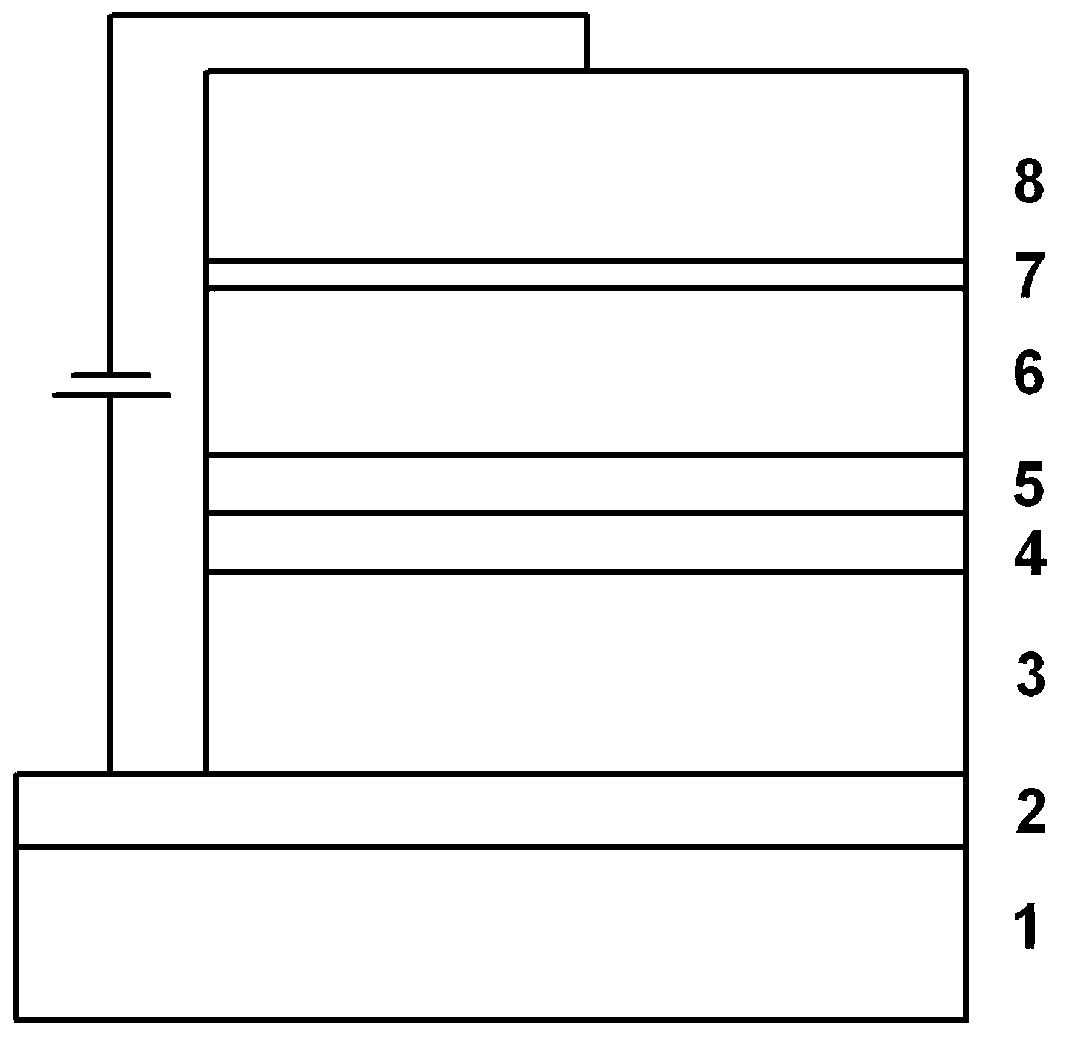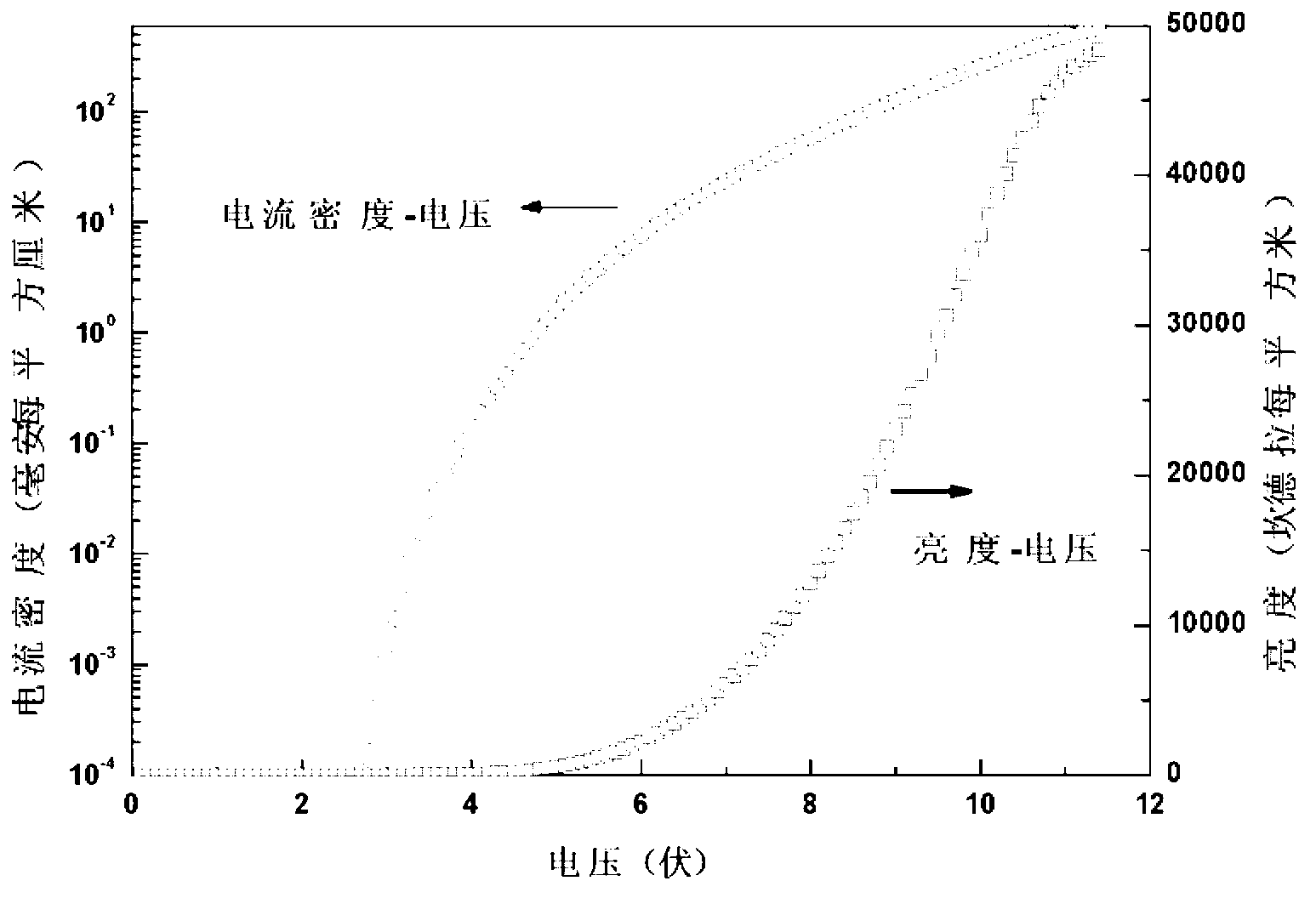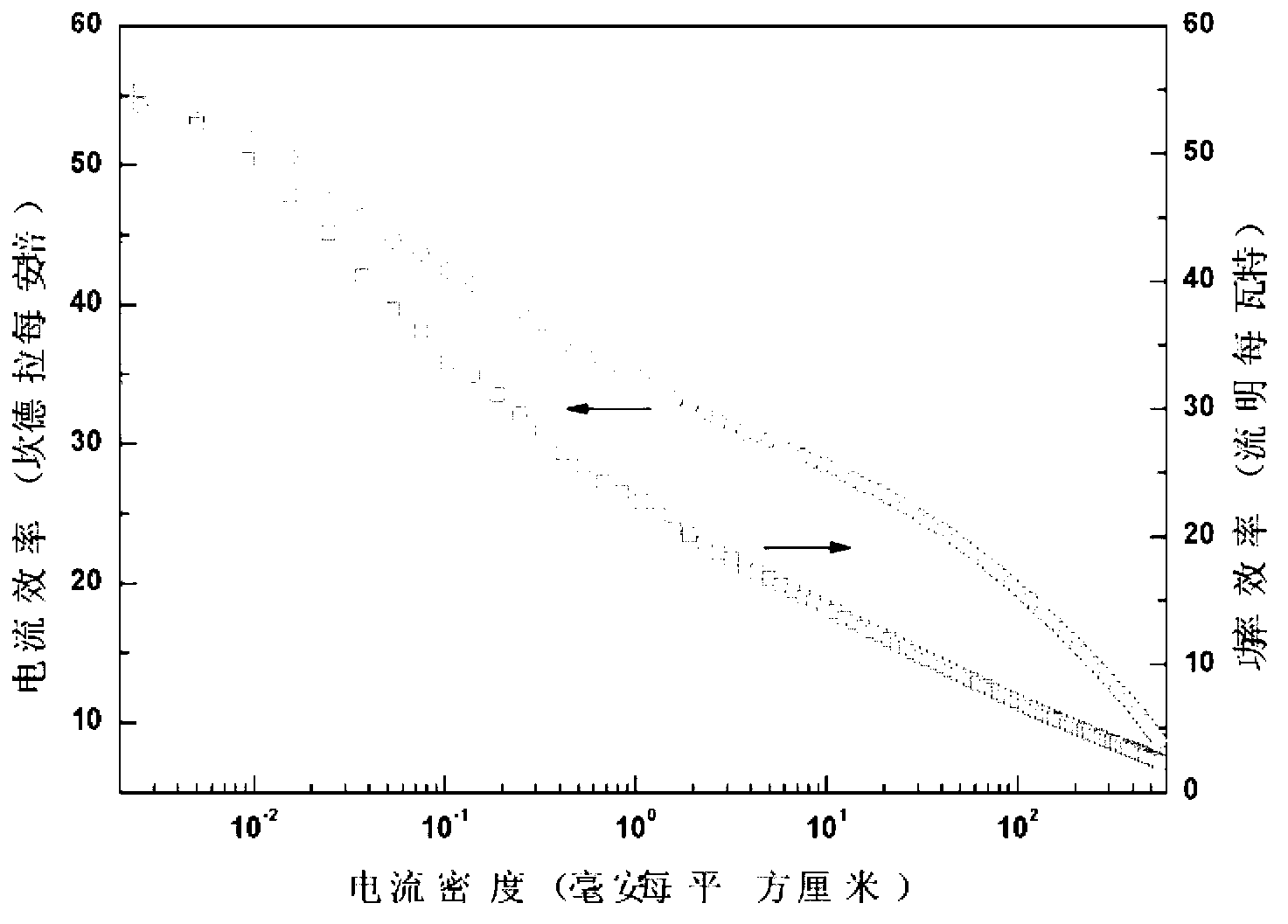White organic light-emitting device and preparation method thereof
An electroluminescent and organic technology, applied in the field of white organic electroluminescent devices and their preparation, can solve the problems of insufficient coverage, low color recovery coefficient, changes in the emission spectrum of the device, etc., and achieves improved spectral stability and high color recovery coefficient. , the effect of high luminous efficiency
- Summary
- Abstract
- Description
- Claims
- Application Information
AI Technical Summary
Problems solved by technology
Method used
Image
Examples
preparation example Construction
[0068] The present invention also provides a preparation method of a white organic electroluminescent device, comprising:
[0069] forming an anode layer on the substrate;
[0070] A hole-dominated light-emitting layer is formed on the anode layer, the hole-dominated light-emitting layer is formed by doping a red organic light-emitting material and a green organic light-emitting material in a hole-type organic host material, and the red organic light-emitting material is Bis(2-phenylquinoline)-(2,2,6,6-tetramethyl-3,5-heptanedionate) iridium, the green organic light-emitting material is tris(2-phenylpyridine) iridium;
[0071] An electron-dominated light-emitting layer is formed on the hole-dominated light-emitting layer, and the electron-dominated light-emitting layer is formed by double-doping an orange organic light-emitting material and a blue organic light-emitting material in an electron-type organic host material, and the orange organic light-emitting material Bis-(2-...
Embodiment 1
[0100] Glass is used as the substrate; an anode layer of indium tin oxide (ITO) material is formed on the glass substrate, and the anode layer is chemically etched into strip electrodes with a width of 10 mm and a length of 30 mm, and the strip electrodes are cleaned with Ultrasonic cleaning of liquid and deionized water for 15 minutes and drying in an oven. The dried electrode was subjected to low-pressure oxygen plasma treatment with a voltage of 400 volts for 10 minutes on the ITO anode in an atmosphere with a vacuum degree of 10 Pa. Transfer to the organic evaporation chamber, in a vacuum of 1~2×10 -5 In Pa's organic evaporation chamber, a 50 nm thick hole transport layer was deposited on the anode layer sequentially at a TAPC evaporation rate of 0.05 nm / s, PQ 2 Ir(dpm) evaporation rate at 0.003nm / s, Ir(ppy) 2 2 nm thick PQ was deposited at an evaporation rate of 0.006 nm / s and a TCTA evaporation rate of 0.1 nm / s 2 Ir(dpm) and Ir(ppy) 2 Hole-dominated light-emitting lay...
Embodiment 2
[0104] Glass is used as the substrate; an anode layer of indium tin oxide (ITO) material is formed on the glass substrate, and the anode layer is chemically etched into strip electrodes with a width of 10 mm and a length of 30 mm, and the strip electrodes are cleaned with Ultrasonic cleaning of liquid and deionized water for 15 minutes and drying in an oven. The dried electrode was subjected to low-pressure oxygen plasma treatment with a voltage of 400 volts for 10 minutes on the ITO anode in an atmosphere with a vacuum degree of 10 Pa. Transfer to the organic evaporation chamber, in a vacuum of 1~2×10 -5 In Pa's organic evaporation chamber, a 50 nm thick hole transport layer was deposited on the anode layer sequentially at a TAPC evaporation rate of 0.05 nm / s, PQ 2 Ir(dpm) evaporation rate at 0.002nm / s, Ir(ppy) 2 2 nm thick PQ was deposited at an evaporation rate of 0.007 nm / s and a TCTA evaporation rate of 0.1 nm / s 2 Ir(dpm) and Ir(ppy) 2 Hole-dominated light-emitting lay...
PUM
 Login to View More
Login to View More Abstract
Description
Claims
Application Information
 Login to View More
Login to View More - R&D
- Intellectual Property
- Life Sciences
- Materials
- Tech Scout
- Unparalleled Data Quality
- Higher Quality Content
- 60% Fewer Hallucinations
Browse by: Latest US Patents, China's latest patents, Technical Efficacy Thesaurus, Application Domain, Technology Topic, Popular Technical Reports.
© 2025 PatSnap. All rights reserved.Legal|Privacy policy|Modern Slavery Act Transparency Statement|Sitemap|About US| Contact US: help@patsnap.com



